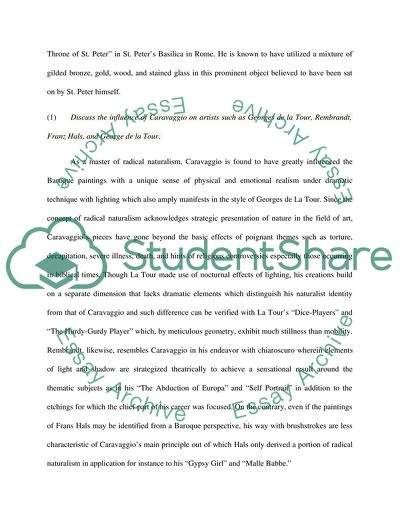The Idea of the Dramatic and Theatrical in the Work of Bernini Research Paper. Retrieved from https://studentshare.org/visual-arts-film-studies/1593390-art-history
The Idea of the Dramatic and Theatrical in the Work of Bernini Research Paper. https://studentshare.org/visual-arts-film-studies/1593390-art-history.


